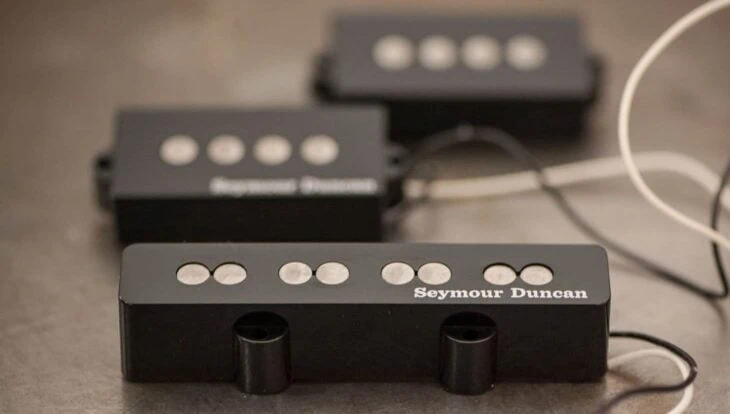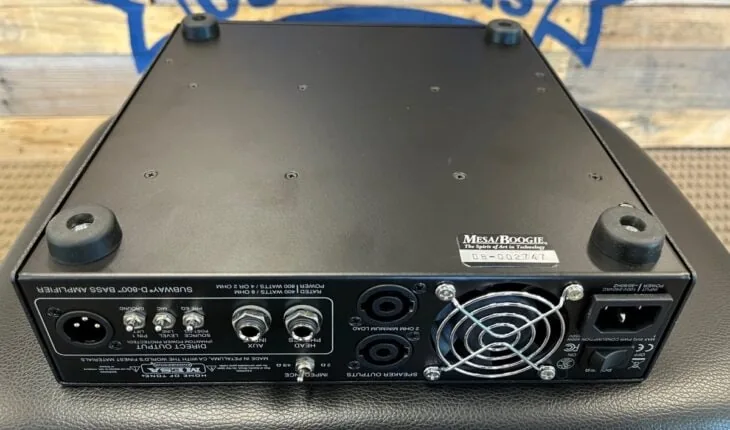Cliff Burton, Metallica’s legendary original bassist, is widely regarded as one of the finest four-string players of all time. Burton’s terrifying technique and monstrous tone owed much to his hero, Motorhead’s Lemmy Kilmister, particularly his choice of the Rickenbacker 4001 bass.
However, Burton’s melodic sensibility and advanced technique underpinned much of his work on Metallica’s first three records, Kill ‘Em All, Ride The Lightning, and Master of Puppets. In particular, he was influenced by the likes of Phil Lynott and Geddy Lee, preferring to treat the bass as a lead instrument.
This approach came to define Metallica’s sound, with Burton’s aggressive, forward bass tone standing out against legions of root-note metal players.
In this article, I’ll look at the key pieces of Cliff Burton’s tone puzzle, with particular reference to his bass sound on “For Whom The Bell Tolls” and “(Anesthesia) – Pulling Teeth,” and how modern players can evoke Burton’s powerful sound.
Table of Contents
Cliff’s Bass Guitars
The first port of call for any bassist looking to mimic Cliff Burton’s tone is the Rickenbacker 4001 bass. This was a staple of the early years, and the Rickenbacker’s distinctive, aggressive tone was a huge piece of Burton’s tonal puzzle.
However, Cliff Burton replaced the pickups in his original 4001 with a Gibson Mudbucker and a Seymour Duncan stacked pickup. You can find plenty of Seymour Duncan bass pickups on the market, and these are a valuable source of drive and articulation in your tonal mix. We’ve previously covered some of the best bass pickups for metal.

Later, Burton used other basses, such as those made by Aria and Alembic.
However, Cliff Burton’s tone had far more to do with his technique and how he wielded his bass, than the actual bass guitar he played.
To start capturing the Burton tone, I’d recommend using a Precision Bass with aggressive Seymour Duncan pickups like the SD Quarter Pound in place of Fender’s own. A guitar like the Precision Bass makes it very easy to swap out the stock pickups for high-gain pickups.
Burton actually used a P-bass on and off over his tragically short career as it was the instrument favored by many of his rock heroes.

Strings
If you listen carefully to “Pulling Teeth,” you can hear how hard Cliff Burton was playing his bass. His right-hand technique involved Burton playing the strings extremely hard with his fingers, rather than a pick.
Accomplishing his athletic, virtuosic right-hand playing over the course of an entire Metallica gig necessitated two things: hours of practice and lighter bass strings than you’d expect for such a heavy band.
Lighter strings react more to hard playing, and will not fatigue either hand as much or as quickly as heavy strings. They also facilitate the wide, aggressive bends for which Burton became famous.
Burton preferred Rotosound strings, gauge .35 to .90. He often used flatwound strings, which offered more bottom end in his bass tone, but these aren’t absolutely necessary for the Burton sound. For flatwound, his choice was the RS77LD set (45-105) from Rotosound.
Such light bass strings are few and far between, so some players even buy a six-string bass set and only use the top four strings.
Cliff Burton Amps
Cliff Burton used a variety of amps throughout his career, but a mainstay of his rig was a high-wattage Mesa Boogie bass amp.

The defined, articulate sound of the Mesa Boogie is a big part of the Cliff Burton tone, and I’d recommend using a Mesa Boogie head-and-cab combo. Burton typically used 1×15 cabs like this Mesa Boogie cabinet.
Cliff Burton Amp Settings – Metallica Bass Tone
While most of Cliff’s tone comes from his technique, it’s the settings on his amplifier that enabled this.
Volume: 8
Set your volume as high as you can. You need to push plenty of air for the Cliff tone.
Gain: 5-6
Most of Cliff Burton’s distortion comes from his pedal array. You do need a fair bit of gain, but not so much that you lose clarity in the tone.
Bass: 3
You don’t need a lot of low-end for this tone. Start with the knob at 3 and add more if the sound is too bright.
Mids: 9-10
The articulation and snarl in Cliff’s tone come mostly from his high midrange. This helps lend clarity to the tone when used with distortion and bass wah pedals.
Treble: 6
You want some treble on this sound, but the bass, strings, and pickups are all already very bright. Accordingly, the treble needs to be more than the low end, but not by much.
Cliff Burton Pedals
For “Pulling Teeth,” Cliff Burton made great use of a Morley Power Wah pedal, with its built-in gain boost. This was a mainstay of his pedalboard throughout his time with Metallica.
Burton’s tone occasionally featured the dense harmonic saturation of fuzz: while some claim that this was an Electro-Harmonix Big Muff, most Metallica aficionados agree that Burton got his fuzz sound from the Morley Fuzz Wah rather than the famous EHX pedal.
Like his Metallica bandmate Kirk Hammett, Cliff Burton appreciated the Ibanez TS9 Tube Screamer, with its distinctive tone coloration.
Final Word
Cliff Burton’s monstrous tone helped define Metallica’s early sound. While most of his sound comes from his remarkable bass-playing technique, it’s important to note that Burton’s choice of gear, from light strings to guitar pedals, facilitated this.
Don’t be surprised if your Burton tone sounds fizzy and nasty in isolation. The tone I’ve described here sounds best in a full band mix, preferably with two distorted guitars.
Armed with this gear, it’s just a matter of practicing for hours until you can nail the chromatic intro to “For Whom The Bell Tolls.”


Does bass at 3 mean at 3 o’clock mode for cliff’s bass tone?
No, it means 3 out of 10.
Is that his main amp settings even from kill em all to master of puppets?